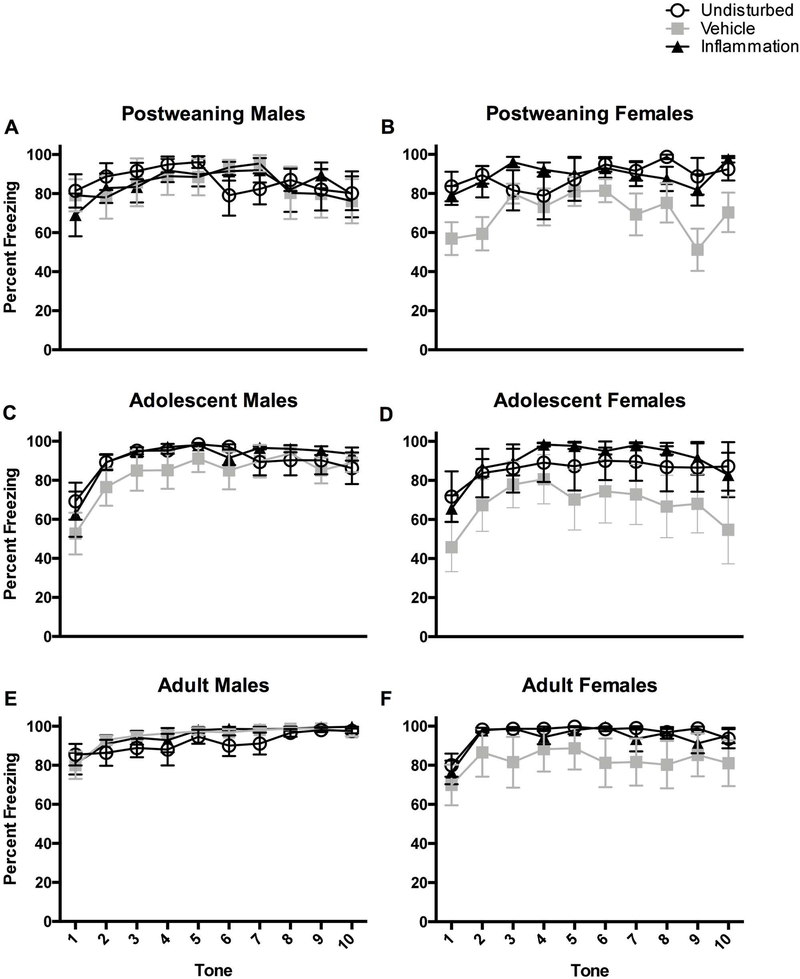Figure 9.
Percent freezing for rats after each of the 10 CS tone presentations in the novel environment. The top two panels represent post-weaning in the undisturbed (N=9M, 9F), vehicle (N=8M, 9F), and inflammation (N=8M, 8F) groups. Adolescent rats are represented in the middle two panels in the undisturbed (N=10M, 8F), vehicle (N=8M, 8F), and inflammation (N=6M, 8F) groups. Adult rats are depicted on the bottom two panels in the undisturbed (N=10M, 9F), vehicle (N=9M 8F), and inflammation (N=7M, 9F) groups. These data do show the attenuation of freezing in adolescent vehicle-treated females as well as a general high freezing percentage across all rats.

